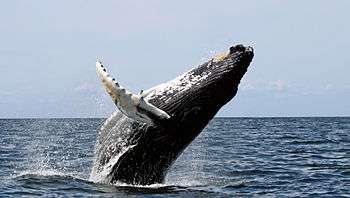Silas D. Alben
| Silas D. Alben | |
|---|---|
| Residence | Atlanta, Georgia |
| Nationality | American |
| Fields |
Biomechanics Numerical methods Control theory |
| Institutions |
Georgia Institute of Technology University of Michigan |
| Alma mater |
New York University Harvard University |
| Doctoral advisor | Michael Shelley |
Silas D. Alben is an American mathematician and an Assistant Professor in the School of Mathematics at the University of Michigan. Alben works in the area of biomechanics and biologically inspired systems.
Biography
Education
Silas Alben attended Harvard College where he received in 1999 A.B. degrees in Mathematics and Physics, magna cum laude.[1] In 2000, he joined the Courant Institute of Mathematical Sciences at New York University, where he received a Ph.D. in Mathematics in 2004. His thesis Drag Reduction by Self-Similar Bending and a Transition to Forward Flight by a Symmetry-Breaking Instability was advised by Michael Shelley.[2]
Research
Alben's research focuses on problems arising in biomechanics and material science.
Flexible structures
As a graduate student at NYU, Alben worked with Jun Zhang and Michael Shelley in investigating the dynamics of flexible structures and how such structures can become more aerodynamic by altering their shape. In this study, experiments visualized a short glass fiber deforming in fluid flow, and analysis showed how the fiber can reduce the drag force exerted by the fluid by changing its shape. This work was published 2002 in Nature under the title Drag Reduction Through Self-Similar Bending of a Flexible Body,[3] and was the subject of various news articles in periodicals including The New York Times[4] and others.[5]
Humpback-whales

As a Postdoctoral Fellow at Harvard, Alben collaborated with Ernst A. van Nierop and Michael P. Brenner in a paper titled "How Bumps on Whale Flippers Delay Stall: An Aerodynamic Model".[6] This paper addressed an interesting problem in biology and physics which deals with the humpback whale's agility due to bumps on the leading edges of their flippers. The paper gave a mathematical model for this hydrodynamic phenomenon. This result, featured in MIT's Technology Review[7] and Nature,[8] provides a theoretical basis for potential improvements in using bumps for more stable airplanes, more agile submarines, and more efficient turbine blades.
Self-assembly
In 2007, Alben investigated (with Michael P. Brenner) the self-assembly of a 3D structures from flat, elastic sheets. This experiment, featured on New Scientist,[9] presented a new technique in nano construction; previously, the transformation of flat sheets to 3D structures were performed by random formation, but in this study, the addition of biases into the design of the sheets gave the possibility of predicting the resulting shape.
Honors and awards
- Alfred P. Sloan Foundation Research Fellow (2011)
References
- ↑ APS biography of Silas Alben
- ↑ Alben, S. (2004). Drag reduction by self-similar bending and a transition to forward flight by a symmetry breaking instability.
- ↑ Alben, S.; Shelley, M.; Zhang, J. (2002). "Drag reduction through self-similar bending of a flexible body" (PDF). Nature. 420 (6915): 479–481. Bibcode:2002Natur.420..479A. doi:10.1038/nature01232. PMID 12466836. Retrieved 2008-06-29.
- ↑ Nature's Secret to Building for Strength: Flexibility
- ↑ NYU scientists show the benefits of being flexible
- ↑ Van Nierop, E.A.; Alben, S.; Brenner, M.P. (2008). "How Bumps on Whale Flippers Delay Stall: An Aerodynamic Model". Physical Review Letters. 100 (5): 54502. Bibcode:2008PhRvL.100e4502V. doi:10.1103/PhysRevLett.100.054502.
- ↑ Whale-Inspired Wind Turbines
- ↑ Fluid dynamics: Lifting a whale
- ↑ Self-assembly could simplify nanotech construction